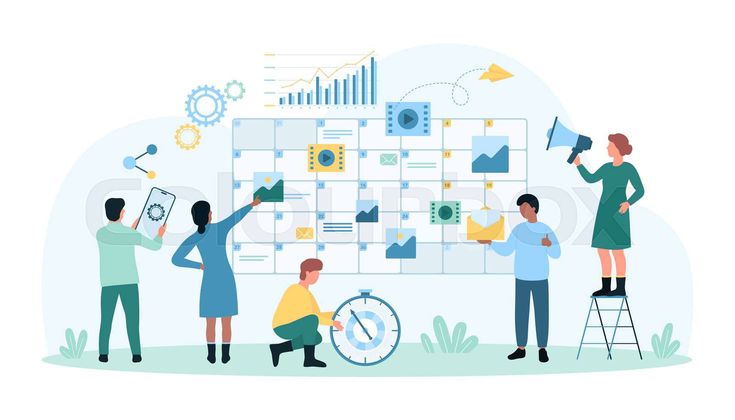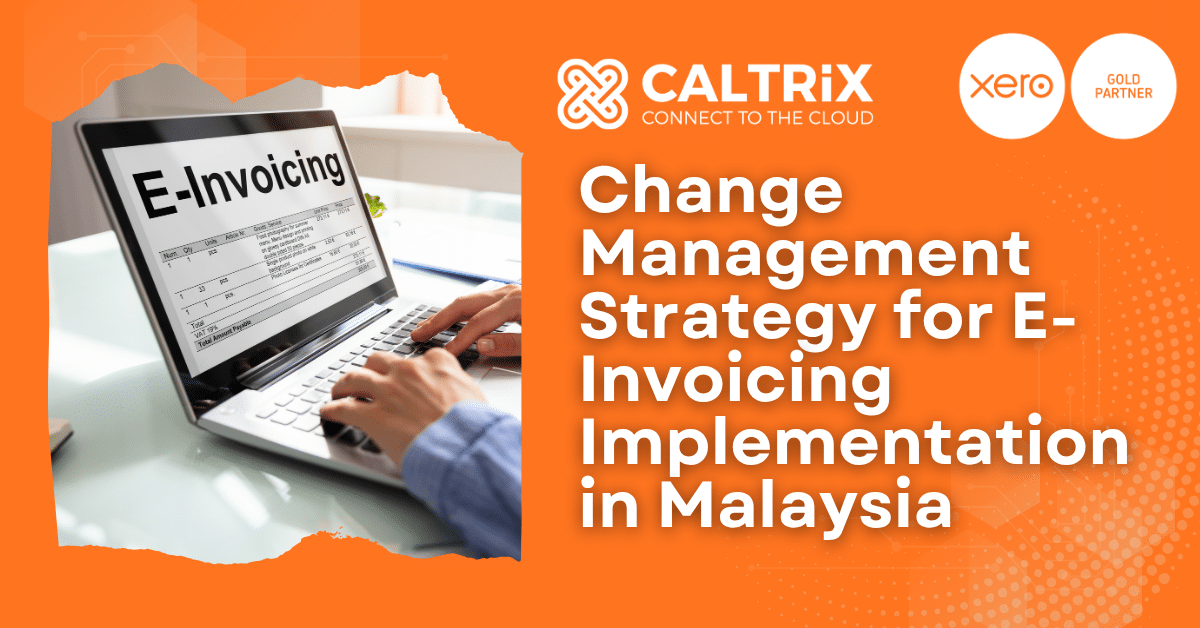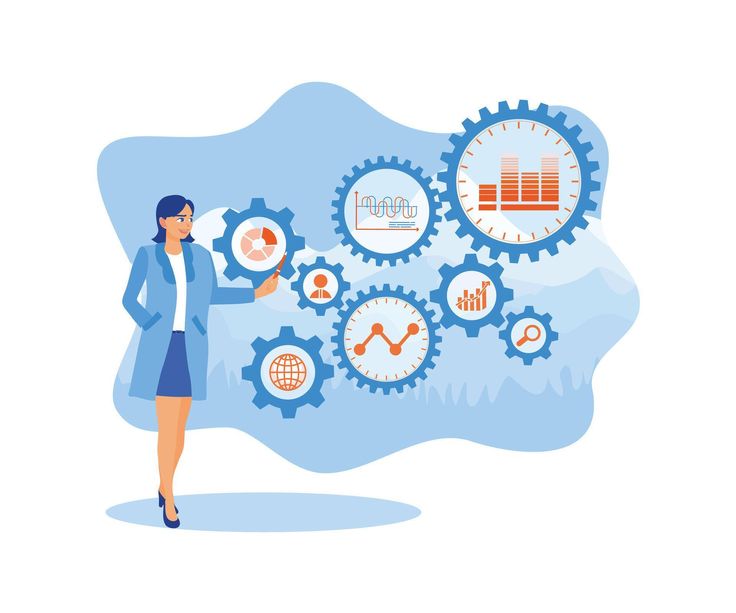Rolling out e-invoicing in Malaysia with Xero has several advantages. It can automate processes, reduce errors, and improve internal controls for government compliance. There has to be an effective change management program to ensure successful digital transformation.
This guide is filled with practical tips for businesses. It covers managing change, stakeholders’ engagement, employee training methods, and tracking adoption. These processes give a smooth introduction of e-invoicing and allow users to meet the system more effectively during the onboarding process.
Also, understanding the 4 Corner Model of e-invoicing is critical to organizations. The model increases user adoption, participation, and utilization of the business product. It specifies the number of users who will actively utilize the product. It defines the target audience who needs to be trained and supported.
The model allows active user participation in onboarding. This raises the success rate of implementation and adoption in the long term. This raises the implementation success rate, and product analytics tools help measure product adoption in the long term. Critical thinking of the user journey and ongoing feedback from the users can further optimize the process, giving a deeper understanding of problem-solving and product usage.

What is the 4 Corner Model of E-Invoicing?
The 4 Corner Model focuses on four parameters that decide the adoption and utilization of e-invoicing systems by the users. Focus on these parameters guarantees enhanced performance for the organizations.
1. User Engagement
User involvement refers to making employees actively engaged. When active workers are involved, they understand the system well. Regular contact keeps them engaged. It also guarantees active utilization of the system, preventing lose interest and total revenue.
2. Employee Training Methods
Right training methods must be varied and effective. Using diverse means, such as online tutorials, on-the-job training, hands-on training, or in-person-instructor-led-training, enables users to interact more effectively and learn faster at their own pace. Adequate training enables all to achieve an equal level of knowledge about e-invoicing.
3. Time Frame and Measurement Metrics
Organizations must monitor measurable outcomes for specific time frames. Metrics like session length, adoption rate, and activation rate reflect what the users are performing. Monitoring these key features, organizations have an idea of what works and what can be improved. Metric helps to achieve clear goals and see how many users are meeting targets.
4. Application and Continuous Improvement
Monitoring these metrics regularly assists organizations in refining training and system functionality. Continuous improvement keeps the users engaged and satisfied. It also increases active participation, net promoter score, and customer loyalty. It further assists in continuous product development.
Why a Solid E-Invoicing Change Management Strategy is Critical to the Adoption of E-Invoicing
It is not just an upgrade in technology to move to e-invoicing. It is a sea change in process, workflow, and corporate culture. Without a change management strategy, threats to the organization’s goals exist. Some of these threats include user resistance, low adoption, and misuse of features. These issues could lead to a longer duration of the project. They can also increase costs and render the system less productive.
On the other hand, a well-planned e-invoicing change management strategy has several benefits. It ensures that the transition benefits organizational goals. It also helps to increase user interaction and acceptance. Most importantly, it promotes how many users adopt the new invoicing platform effectively and achieve maximum benefits.
Designing an Effective Change Management E-Invoicing Strategy
Stakeholder Engagement and Communication Planning
Stakeholder communication and planning are critical to change success. Early engagement of new employees and all stakeholders is an essential beginning point, especially considering new hires who may need onboarding on complex topics. They are in-house departments such as finance, procurement, IT, and compliance. External stakeholders like vendors and suppliers are included. Their influence, interest, and concern are decided upon by stakeholder analysis. Such information facilitates customized engagement strategy.
There should be a formal communication strategy to bring about consistency and clarity. The strategy would outline the benefits of e-invoicing, implementation schedules, and roles. It should also indicate how information will be communicated. Multiple channels guarantee multiple audiences are targeted. Regular email newsletter, interactive training sessions, and intranet portal are examples. These facilitate a culture of transparency.
Positive reinforcement feedback is also crucial. Stakeholders must be given the opportunity to voice concerns, pose questions, and offer ideas. Such feedback increases trust and increases buy-in. With the passage of time, an open approach reduces misinformation and resistance. It also provides a smoother adoption process.
Resistance Management and Employee Training Approaches
Change automatically prompts resistance. Resistance is most likely caused by fear of the unknown, workload increases, or uncertainty about how the system will influence existing routines. Counteracting this, organizations must introduce proactive resistance management. Effective training programs for employees are one such way to implement it.
Training has to be created based on multiple levels of experience and learning styles. Classroom-based training, for example, offers instant interaction and explanation. Mobile workshops give hands-on experience of the e-invoicing system. Job training allows students to learn a new skill through doing the work and applying it immediately. Self-study e-learning and apps give students the flexibility to learn at their own time, optimizing convenience and remembering.
In addition to technical proficiency, training sessions should emphasize the benefits of e-invoicing. They should explain how it streamlines operations, minimizes errors, and maximizes compliance. For example, Xero provides numerous reference guides and FAQs for users to resolve routine operational problems without requiring assistance. It reduces frustration and raises confidence.
Check on the blog -> Building a Digital Finance Department: Tools & Best Practices
Product Adoption Metrics and Success Measurement
There is a need to monitor the success of change management efforts. This allows organizations to learn and improve every day and realize the gain in putting Xero into practice for e-invoicing. Several key metrics will indicate the degree of success in adoption.
Activation Rate: This is the rate of people logging into Xero and completing their first e-invoice or related tasks. This shows early usage of the system.
Feature Adoption: It is tracked how often users use certain features like automated reminders, invoice tracking, or payment interfaces to know what functions are helpful. It will also tell us where training or upgrades need to take place, especially as new features are introduced.
Daily Active Users (DAU) and Monthly Active Users (MAU): They validate repeated use. They indicate if the active user base is growing or shrinking over a time period.
Advanced analysis tools like dashboards, heatmaps, and monitoring of user behavior allow real-time tracking. Examination of such information enables organizations to ascertain areas of bottlenecks and understand user behavior. Such information feeds into training, communication, and feature system optimization.
Cumulatively, such measurement and tools enable increased uptake. They help get Xero’s e-invoicing features to function at the same level across users and deliver optimal value.
Strategies to Increase User Engagement and Sustainability
Creating a Highly Engaging User Experience
Cloud accounting software like Xero delivers an intuitive and simple interface. Xero design supports alignment with user workflows, reducing frustration. Streamlined navigation, fewer steps, and customizable dashboards improve user satisfaction. Good design emotionally satisfies users and makes them feel valued. This leads to feature discovery and prolonged interaction with the system.
Caltrix Asia helps businesses customize their Xero experience and reduce time-consuming tasks. They focus on fulfilling each business’s unique needs. User-focused design skills are with them. They are equally knowledgeable on local market requirements and limited availability of certain features.
Caltrix Asia ensures your dashboard layouts are tailored for your workflows. They optimize interfaces for more efficient use. Their goal is to make your system more productive. They aim at improving overall user experience. By working with Caltrix Asia, you can have a complete solution that will fit your business. They make your Xero system more efficient and user-friendly.
Providing Continuous Support and Feedback
Xero provides easily accessible support in the form of help desks, tutorials, and FAQs. These are simple to use in troubleshooting by the users. Regular feedback sessions in the form of surveys or focus groups enable users to provide their comments. Hearing what users have to say demonstrates how the company regards user comments. Feedback follow-up generates trust and has high engagement.
Maintaining High Employee Engagement and Training Effectiveness
Hands-on, on-site training allows employees to develop strong skills in managing e-invoicing systems. Such training is costly but increases expertise and confidence. Constant learning from refresher courses keeps skills up to speed and helps maintain product knowledge. Such training motivates employees to use and implement the system in full. Overall, this process leads to more effective implementation and fewer errors in electronic invoicing.
Achievement of Organizational Goals with Effective Change Management
Organizational goal achievement through proper change management is crucial in rightful e-invoicing adoption. Coupling the strategic agenda of a firm with a structured change management program ensures complete achievement of the benefits of adopting electronic invoicing systems. Malaysian companies with a forward-thinking approach can address the challenges of digitalization more effectively, with less complicated deployment and higher usage adoption.
Tracking key performance metrics such as the percentage rate of e-invoicing use, the activation rate, and usage frequency provides informative insights. These exercises reflect the degree of system use in daily life. Constant comparison of outcome with intent allows businesses to realize where they are going wrong and make immediate adjustments to strategies. This allows efficiency gains and cost savings to take place as desired.
Staff involvement is also important. If workers are involved in the process of change, they become advocates of the new system. Adoption is accelerated and implementation problems reduced. Offering intensive training, clear communication, and an opportunity for feedback builds confidence and ownership among the staff.
Customer satisfaction is equally important. Seamless, consistent, and natural e-invoicing experiences build customer trust and loyalty. Satisfied customers will more than likely be loyal, increasing their lifetime value. Customer centricity heightens the firm’s long-run competitive advantage in the digital era.
Lastly, effective change management not only enables seamless roll-out of e-invoicing platforms but also creates a culture for constant innovation, improvement, and responsiveness. These are the most important qualities for long-run success and continued growth in contemporary times.
Check on the blog -> 5 Ways to Reduce Accounting Errors with Xero Cloud Accounting Software








